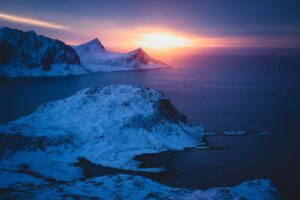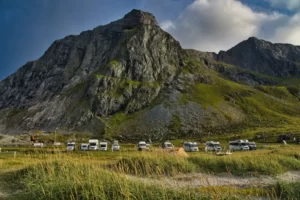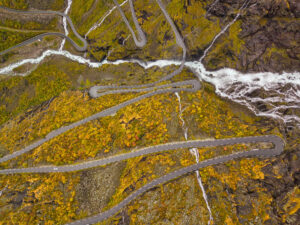When Sunny Days Surrender To Ocean Fog in Lofoten
This phenomenon, known as ocean fog or “skodde” by the locals, is a frequent summer visitor to the Lofoten Islands. Coming from afar, the fog that rolls in over the coast doesn’t necessarily accompany a weather change.
There may not be low pressure, strong winds, or precipitation. On the contrary, when the white mass slowly approaches, it can be sunny, with gentle breezes and pleasant temperatures. But “skodde” can swiftly transform a warm, sunny day into a mysterious realm of dense fog and cold temperatures.

Ocean fog entering the Flakstadpollen in western Lofoten
The Science Behind Lofoten’s Enigmatic “Skodde”
The ocean fog experienced in Lofoten usually emerges when warm, moisture-laden air glides over the colder ocean currents surrounding the archipelago.
As the warm air encounters the chilly waters, it cools down, causing the moisture within to condense and form a thick blanket of fog that envelops the rugged mountains and stretches across the coastal areas.
This advection fog adds a magical touch to Lofoten, making the scenery look mysterious and enchanting, like something from a fairy tale.

The ocean fog in Vesterålen archipelago, north of Lofoten
Understanding The Seasonal Arrival Of Fog In Lofoten
Fog appears when the air reaches its maximum moisture capacity, causing the water vapor to condense.
In Lofoten, this phenomenon is especially prevalent during the initial weeks of summer because of the low sea temperature.
As the warm air interacts with the colder ocean, it cools down, forming fog. However, as the summer progresses and the sea temperature rises, the cooling effect diminishes, resulting in fewer foggy days.

Blekktinden peaking from the layer of ocean fog in Lofoten
The Role Of Geography And Wind Patterns
In Lofoten, fog can come from almost all directions except east-northeast. A typical weather pattern occurs when warm air moves from the east into the Barents Sea from Finnmark and Russia. This air cools down significantly, creating favorable conditions for fog to form.
The fog then travels along the coast towards the south with the help of the land breeze or prevailing northerly winds in Lofoten.
However, the mountains in Lofoten, which reach heights of up to 1000 meters above sea level, act as barriers to fog. It tends to get trapped on the outer side of Lofoten, except when it can pass through specific narrow passages.
In other words, the mountains in Lofoten serve as obstacles that result in distinct weather conditions within a short distance. Nevertheless, Lofoten’s inner and outer sides are equally prone to fog when the wind blows from the south or west.
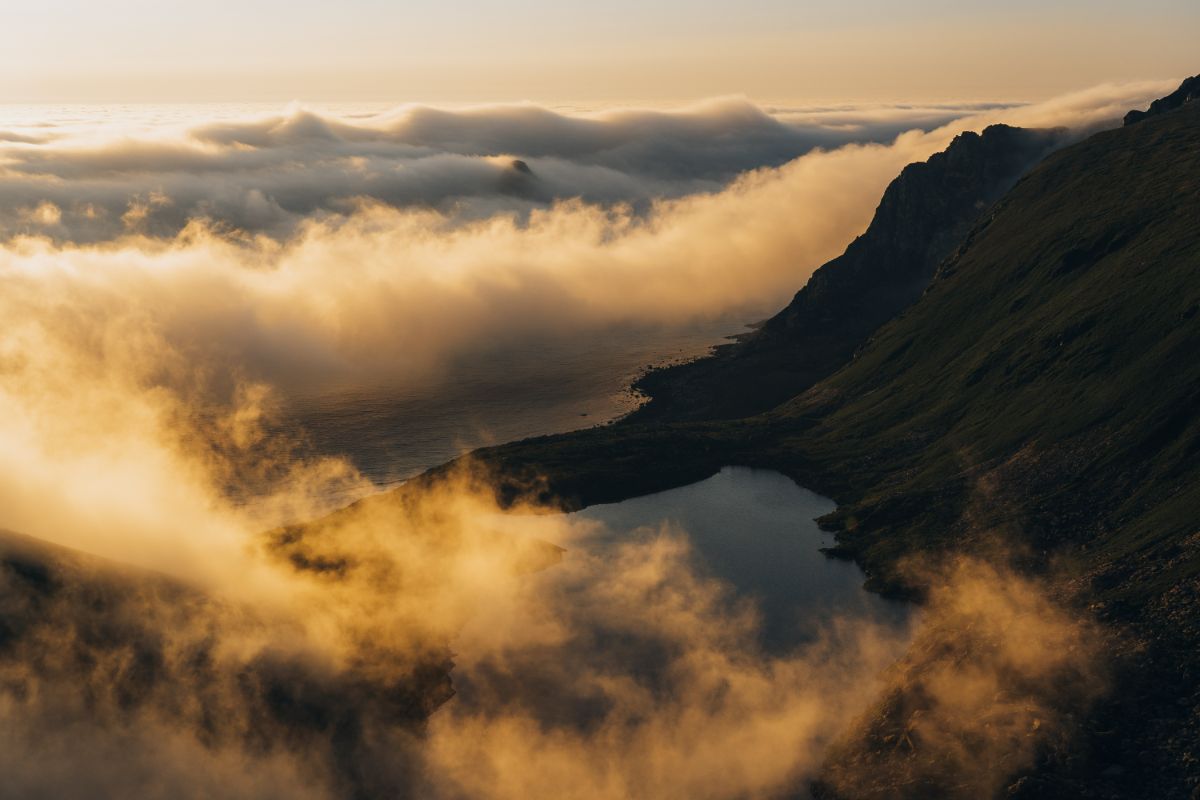
Localized Weather Conditions In Lofoten
For photographers and videographers, Lofoten’s ocean fog presents a captivating opportunity to capture breathtaking visuals, unveiling a different dimension of its natural beauty.
However, the fog’s presence may prove a challenge for those seeking clear vistas to hike the stunning peaks or soak up the sun on sandy beaches.
Remember that the weather in Lofoten is highly localized, meaning that while the northern coast may experience cool temperatures, high humidity, and a veil of ocean fog, it is not uncommon for the sun to be gleaming down on the southern coast.
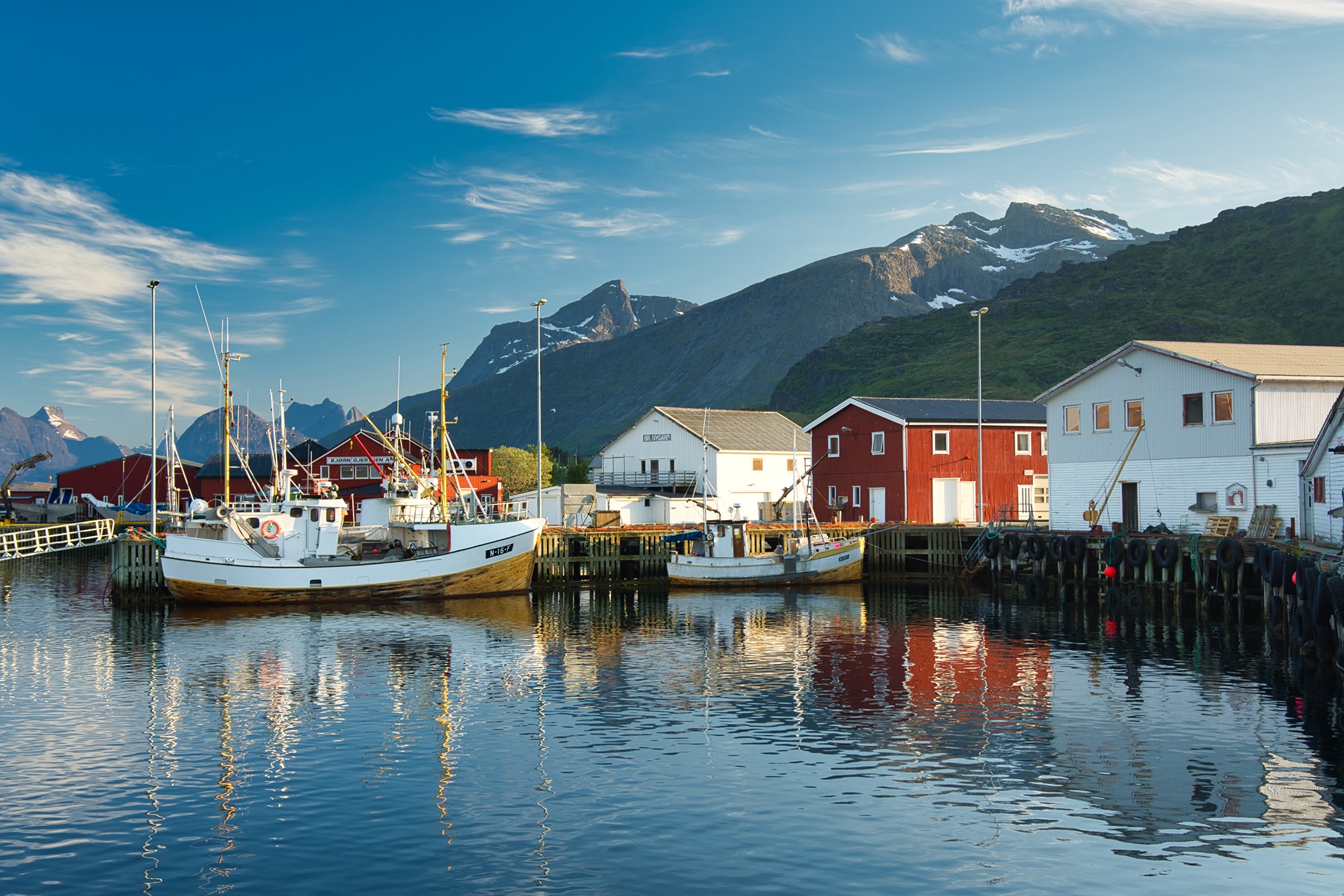
The view of Fredvang harbour on a warm sunny day
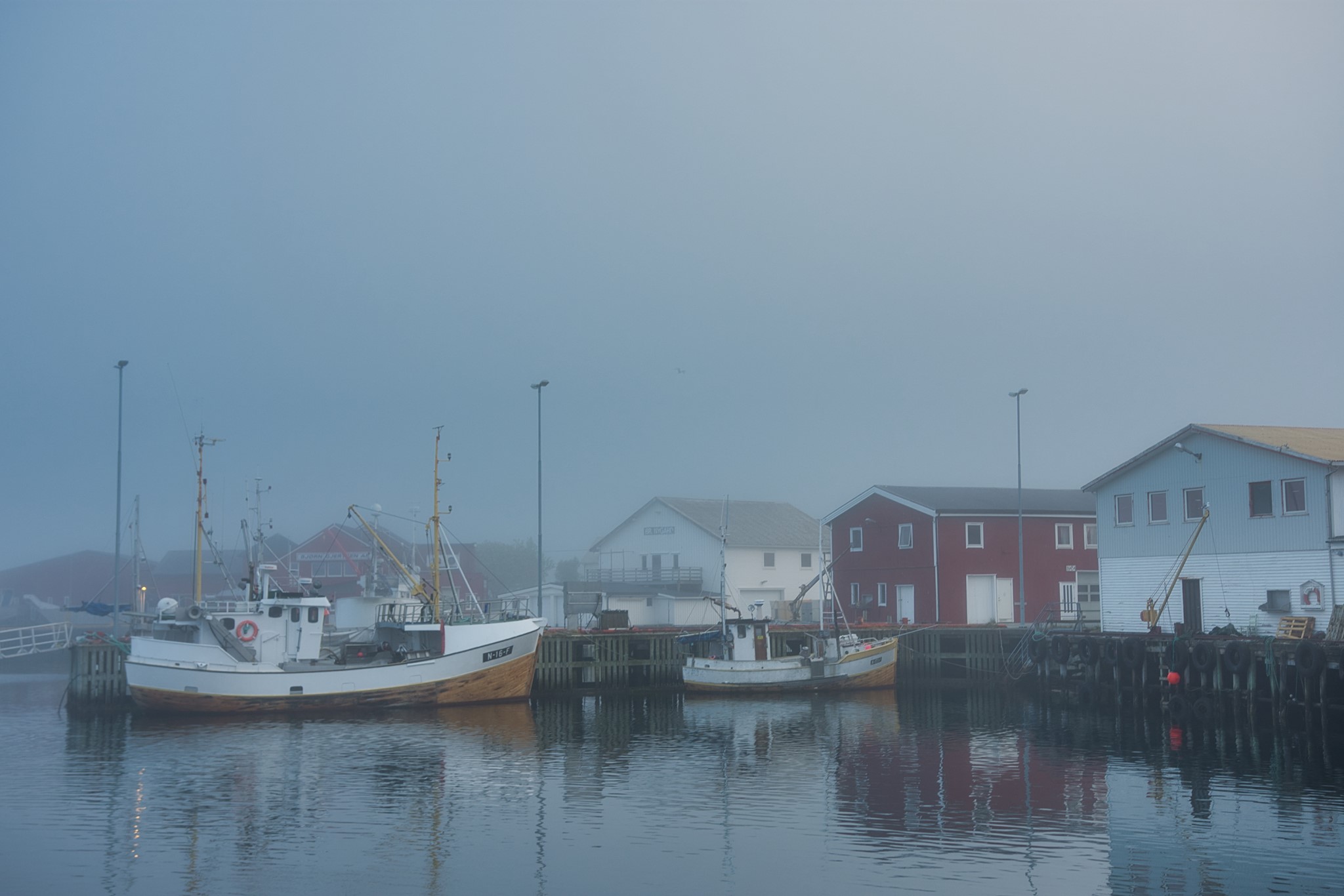
This is the same viewof Fredvang harbour taken about 30 minutes after the picture above
